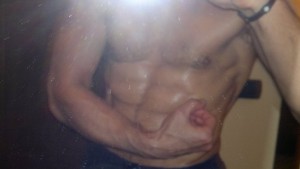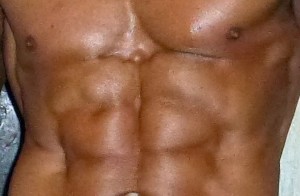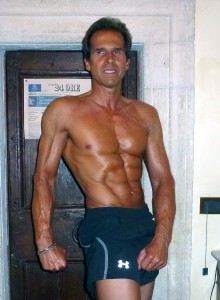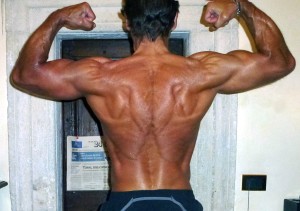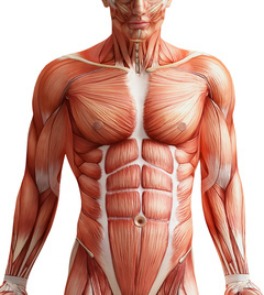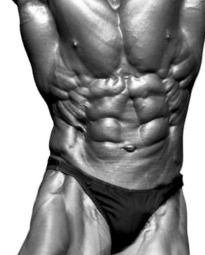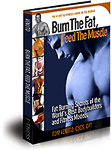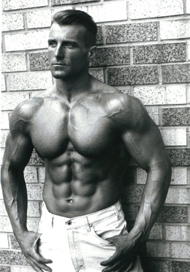Title: Intensity or Insanity: How Much Training Effort is Enough?
Author: By Tom Venuto
Word Count: 1705
QUESTION: Tom, do you think that the intensity of your workout is “THE THING” that gives you results or is it more about being consistent with your workouts? The reason I ask is because I’m following your www.BurnTheFat.com! nutrition program and I also just got a new high-intensity workout program called the Insanity series. I like doing these workouts, but I’m having a hard time pushing myself that hard every day and I’m finding now that I’m starting to dread doing them. I have been doing these workouts only 2-3 times per week instead of the 5 times per week that is recommended in the program. This workout brings me to my knees. I’ve started questioning myself and wondering if it’s even worth the torture. – Paul
reason I ask is because I’m following your www.BurnTheFat.com! nutrition program and I also just got a new high-intensity workout program called the Insanity series. I like doing these workouts, but I’m having a hard time pushing myself that hard every day and I’m finding now that I’m starting to dread doing them. I have been doing these workouts only 2-3 times per week instead of the 5 times per week that is recommended in the program. This workout brings me to my knees. I’ve started questioning myself and wondering if it’s even worth the torture. – Paul
ANSWER: Intensity is one of the most important training variables, and at times, you’ll definitely want to train with high intensity to get maximum results in the shortest time.
But the real answer to your question may depend on your goals, the shape you’re in now and even your personality type.
Some things to consider:
- Are you a beginner or already in shape and looking for the next challenge?
- Do you like home bodyweight workouts or are you a gym and weights/ cardio machine type?
- Are you the “hard-core” fitness nut type of person or do you simply want to get leaner and healthier, nothing crazy?
- When you say you want “results”, are you talking about fat loss, cardiovascular fitness improvement, muscle growth or all of the above?
With that in mind, let’s answer the HOW MUCH INTENSITY question in the context of fat loss first.
I’m sure you can appreciate that people can lose weight while lying in a hospital bed. If someone is sick and can’t keep food down, then there can be a significant calorie deficit even without exercise. That rules out high intensity training as an absolute prerequisite for weight loss. In fact, this simple example proves that exercise is not a requirement to lose weight at all.
Obviously, starving yourself is NOT the approach I recommend! My burn the fat program (www.BurnTheFat.com!) is based on the opposite: train more and feed the muscle and fuel the training. I’m simply making the point that it’s NOT intensity PER SE or even ANY type of particular workout that creates the fat loss, IT’S THE CALORIE DEFICIT!
To burn fat, focus on establishing and maintaining a calorie deficit.
To increase speed of fat loss, focus on increasing the size of the calorie deficit.
Calorie deficit = fat loss is a liberating concept because it makes you realize you have endless options for achieving your fat loss goal using all kinds of different combinations of nutrition and exercise. Furthermore, none of the workouts have to beat you into submission to achieve a calorie deficit, especially if you work diligently on the nutrition side of the equation.
Countless thousands of people have acheived their goal weight with walking (low intensity exercise) as their only cardio. They chose walking because that’s what suited their needs and their personality.
Here’s where intensity comes in:
From a bodyfat loss perspective, using higher intensity training makes the workout more EFFICIENT. The higher the intensity, the more calories you burn. The more calories you burn, the more fat you lose, if all else remains equal (ie, if you don’t compensate by eating more).
Some trainers claim that low intensity steady-state exercise is “ineffective” or even “totally worthless.”
THIS IS TOTALLY FALSE!
Low intensity training is not ineffective, it’s simply less efficient. For example, it takes a lot of time walking to burn enough calories to put a major dent in your fat stores. If you were to increase the intensity of your cardio, you’d burn more calories in less time and you’d drop the fat faster. You’d also be improving time efficiency by achieving a calorie deficit with less time investment.
But think about this: If that high intensity workout made you start to dread it, or if you started to think of it as torture, or if it got you injured, then how long would you stick with it?
If you can’t stick with it, what good did it do you? It gets tossed on the ever-growing pile of other quick fixes.
It’s surprising how often a moderate approach, or even the slow and steady approach, beats out the quick and intense approach if you extend your time perspective and think long term.
It’s the classic story of the tortoise vs the hare:
The hare comes blazing out of the gate in a sprint and leaves the tortoise in the dust. Looks like the hare will be the clear winner. But the hare gasses out after that sprint and takes a nap.
The tortoise, being the more consistent of the two, slowly but surely keeps making progress, getting closer and closer to the goal, never missing a step.
As the fable goes, the tortoise eventually passes the complacent and or exhausted hare, who is lazily snoozing under a shady tree. In the end, the Tortoise wins the race. Leisurely, I might add… (no “pukey” t-shirt necessary).
Intensity gets you there faster, if you can stick with it, but consistency ALWAYS pays in the long run when it comes to fat loss.
What about intensity in the context of fitness improvement?
It’s important to know that you can get health benefits from moderate and even light exercise. But when you compare it to intense exercise, there’s no contest. Higher intensity types of cardio kick low intensity’s butt.
In fact, it’s almost shocking how much cardiovascular improvement you can get from a fairly small amount of intense, or sprint-like training:
This is one of the reasons High Intensity Interval Training (HIIT) is justifiably so popular.
A paper just published in the ACSM’s Exercise and Sport Sciences Review (July 2009) discussed the research suggesting that intense aerobic interval training provides greater benefits for the heart than low or moderate intensity exercise.
The benefits discussed included:
Increased maximal oxygen uptake
- Improved heart muscle contractile function
- Improved heart muscle calcium handling
- reduced cardiac dysfunction in metabolic syndrome
- Reversed pathological cardiac hypertrophy
- Increased physiological hypertrophy of the heart muscle
- Overall: improved quality of life and length of life by avoiding fatal heart attacks.
The researchers concluded:
“The studies indicate that high intensity may be an important success factor for designing effective exercise programs and that high intensity may be particularly critical for improving cardiac function.”
Ok, so that covers intensity in the contexts of fat burning and cardiovascular improvement. What about for building muscle?
Once again, training intensity is a critical factor. For muscles to grow, you have to literally break down muscle fibers, disrput your body’s homeostasis and create a stress response. The adaptation to that disruption is strength and hypertrophy, but it only occurs if you can recover from the stress. The major point is that intensity is a critical factor for all kinds of health and fitness training, but it’s also the one variable that has to be managed the most carefully… and sensibly!
Doing knock-you-to-your-knees workouts of any kind, every single day is not a smart strategy.
I know a few guys – like my friend Mike the kickboxing instructor – the dude is indestructable! He could take any workout you give him, chew it up, spit it out and then say, “Is that it?” (Then he would go teach 3 classes in a row!)
But unless you’re one of these super-human genetic mutants, your body just can’t take a nonstop pounding. Yet there are lots of people with the dispostion and personality type to go in the gym and beat themselves to a pulp each time. Despite the heroic effort, they may be doing their bodies more harm than good (of course, I was never one of those crazy “insane training” people, ahem, cough, cough)
This is why most experts today are recommending only 2-3 HIIT style or high intensity cardio workouts per week when you’re concurrently doing intense weight training. If you want to increase your calorie deficit so you can burn more fat in less time, go ahead and do more training. But for most people, the additional workouts should be low or medium in intensity so they don’t interfere with physical recovery or lead to mental burnout.
Intense daily boot-campish workouts may appeal to the “I want to be tough as a navy seal” personality types and advanced workouts serve their purpose – to provide an appropriate challenge for advanced fitness enthusiasts. If you enjoy it, and if you can recover from it, and if you can stay injury-free, and if you can stick with it consistently, then go for it. But be sure to balance your intensity with recovery:
* Balance your weight training and cardio (volume, frequency and intensity) so you can recover from both and reap the benefits of both forms of training.
* Vary your workouts with some form of periodization or intensity-cycling system.
Last but not least, I believe that weight training should sit atop the exercise hierarchy as one part of a total fitness program.
Fat loss programs that are based entirely on calisthenic, aerobic or body weight exercise are popular today, but I recommend a 4-element model:
1. Nutrition
2. Weight training
3. Cardio training (low/moderate and intense)
4. Mental training (mindset and motivation)
For total fitness and physique development – muscle, strength, conditioning and leanness, combine weights with cardio…
Judiciously balance hare-like intensity with recovery…
AND do it all with tortoise-like consistency…
Then, watch what happens to your body. You will like it!
Train hard and expect success,
Tom Venuto
Author
www.BurnTheFat.com!
PS. You can learn more about my 4-part model of fat loss in my burn the fat program at: www.BurnTheFat.com!
About the Author:
Tom Venuto is a natural bodybuilder, certified strength and conditioning specialist (CSCS) and a certified personal trainer (CPT). Tom is the author of “www.BurnTheFat.com!” which teaches you how to get lean without drugs or supplements using methods of the world’s best bodybuilders and fitness models. Learn how to get rid of stubborn fat and increase your metabolism by visiting: www.BurnTheFat.com!
(CSCS) and a certified personal trainer (CPT). Tom is the author of “www.BurnTheFat.com!” which teaches you how to get lean without drugs or supplements using methods of the world’s best bodybuilders and fitness models. Learn how to get rid of stubborn fat and increase your metabolism by visiting: www.BurnTheFat.com!



